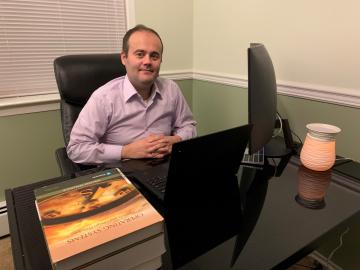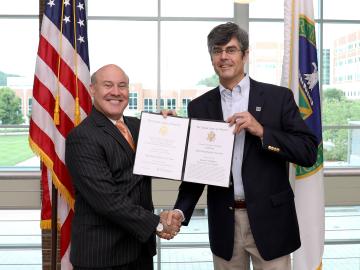
Filter News
Area of Research
- Biology and Environment (18)
- Computational Biology (1)
- Computer Science (1)
- Electricity and Smart Grid (1)
- Energy Science (29)
- Fusion and Fission (6)
- Isotopes (16)
- Materials (30)
- Materials for Computing (2)
- National Security (13)
- Neutron Science (9)
- Nuclear Science and Technology (3)
- Supercomputing (57)
News Type
News Topics
- (-) Artificial Intelligence (79)
- (-) Composites (12)
- (-) Energy Storage (37)
- (-) Frontier (45)
- (-) Isotopes (35)
- (-) Machine Learning (40)
- (-) Microelectronics (3)
- (-) Physics (39)
- (-) Summit (40)
- 3-D Printing/Advanced Manufacturing (60)
- Advanced Reactors (13)
- Big Data (50)
- Bioenergy (70)
- Biology (82)
- Biomedical (44)
- Biotechnology (26)
- Buildings (35)
- Chemical Sciences (37)
- Clean Water (17)
- Computer Science (117)
- Coronavirus (20)
- Critical Materials (6)
- Cybersecurity (14)
- Education (2)
- Emergency (3)
- Environment (124)
- Exascale Computing (51)
- Fossil Energy (6)
- Fusion (40)
- Grid (34)
- High-Performance Computing (82)
- Hydropower (6)
- ITER (4)
- Materials (53)
- Materials Science (64)
- Mathematics (9)
- Mercury (7)
- Microscopy (27)
- Molten Salt (2)
- Nanotechnology (21)
- National Security (63)
- Neutron Science (85)
- Nuclear Energy (71)
- Partnerships (36)
- Polymers (12)
- Quantum Computing (35)
- Quantum Science (49)
- Security (18)
- Simulation (44)
- Software (1)
- Space Exploration (13)
- Statistics (2)
- Transportation (35)
Media Contacts

A study led by researchers at ORNL could help make materials design as customizable as point-and-click.

ORNL scientists had a problem mapping the genomes of bacteria to better understand the origins of their physical traits and improve their function for bioenergy production.

A rapidly emerging consensus in the scientific community predicts the future will be defined by humanity’s ability to exploit the laws of quantum mechanics.

To explore the inner workings of severe acute respiratory syndrome coronavirus 2, or SARS-CoV-2, researchers from ORNL developed a novel technique.

A team of scientists led by the Department of Energy’s Oak Ridge National Laboratory and the Georgia Institute of Technology is using supercomputing and revolutionary deep learning tools to predict the structures and roles of thousands of proteins with unknown functions.

Burak Ozpineci started out at ORNL working on a novel project: introducing silicon carbide into power electronics for more efficient electric vehicles. Twenty years later, the car he drives contains those same components.

Energy Secretary Jennifer Granholm visited ORNL on Nov. 22 for a two-hour tour, meeting top scientists and engineers as they highlighted projects and world-leading capabilities that address some of the country’s most complex research and technical challenges.

Having co-developed the power electronics behind ORNL’s compact, high-level wireless power technology for automobiles, Erdem Asa is looking to the skies to apply the same breakthrough to aviation.

A 25-year career with the U.S. Navy, commanding combat missions overseas, brought Tom Kollie back to where he came from — ready to serve his country in a new way.

As a medical isotope, thorium-228 has a lot of potential — and Oak Ridge National Laboratory produces a lot.


